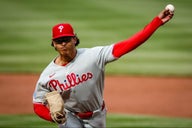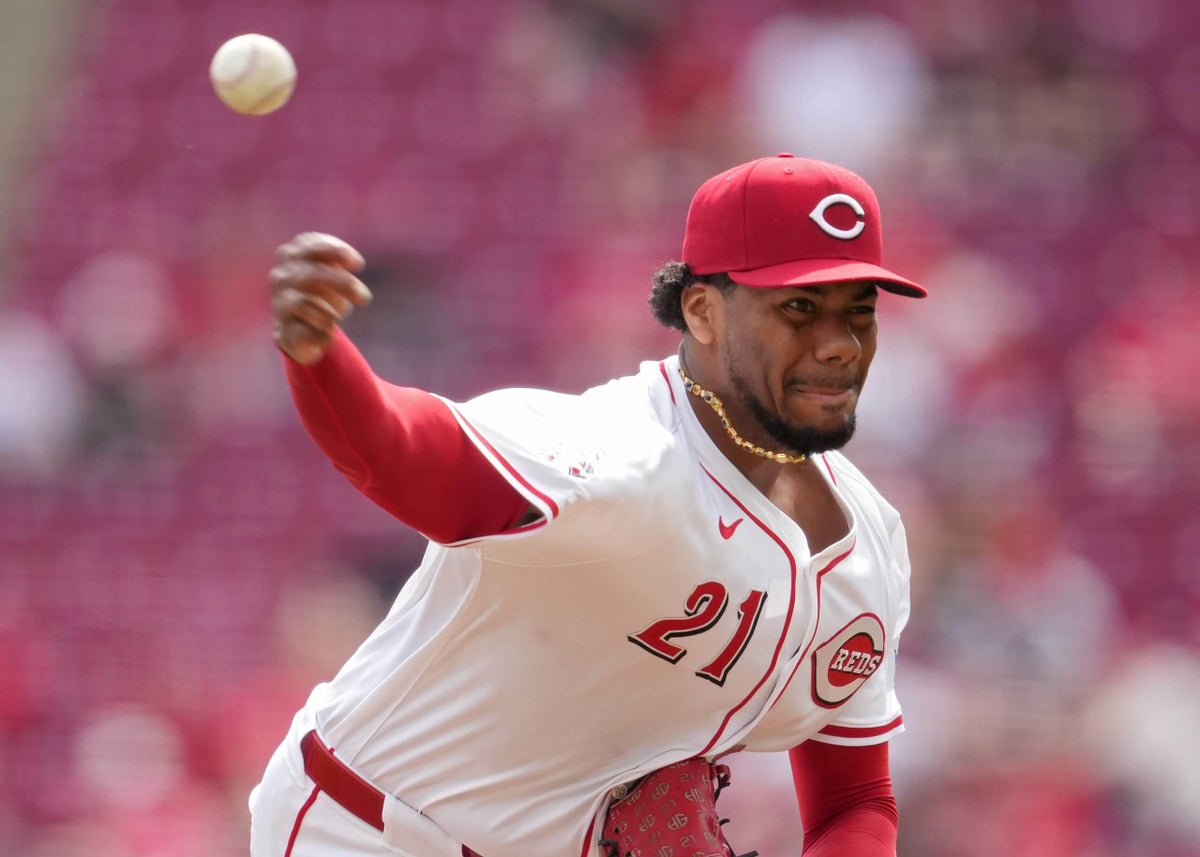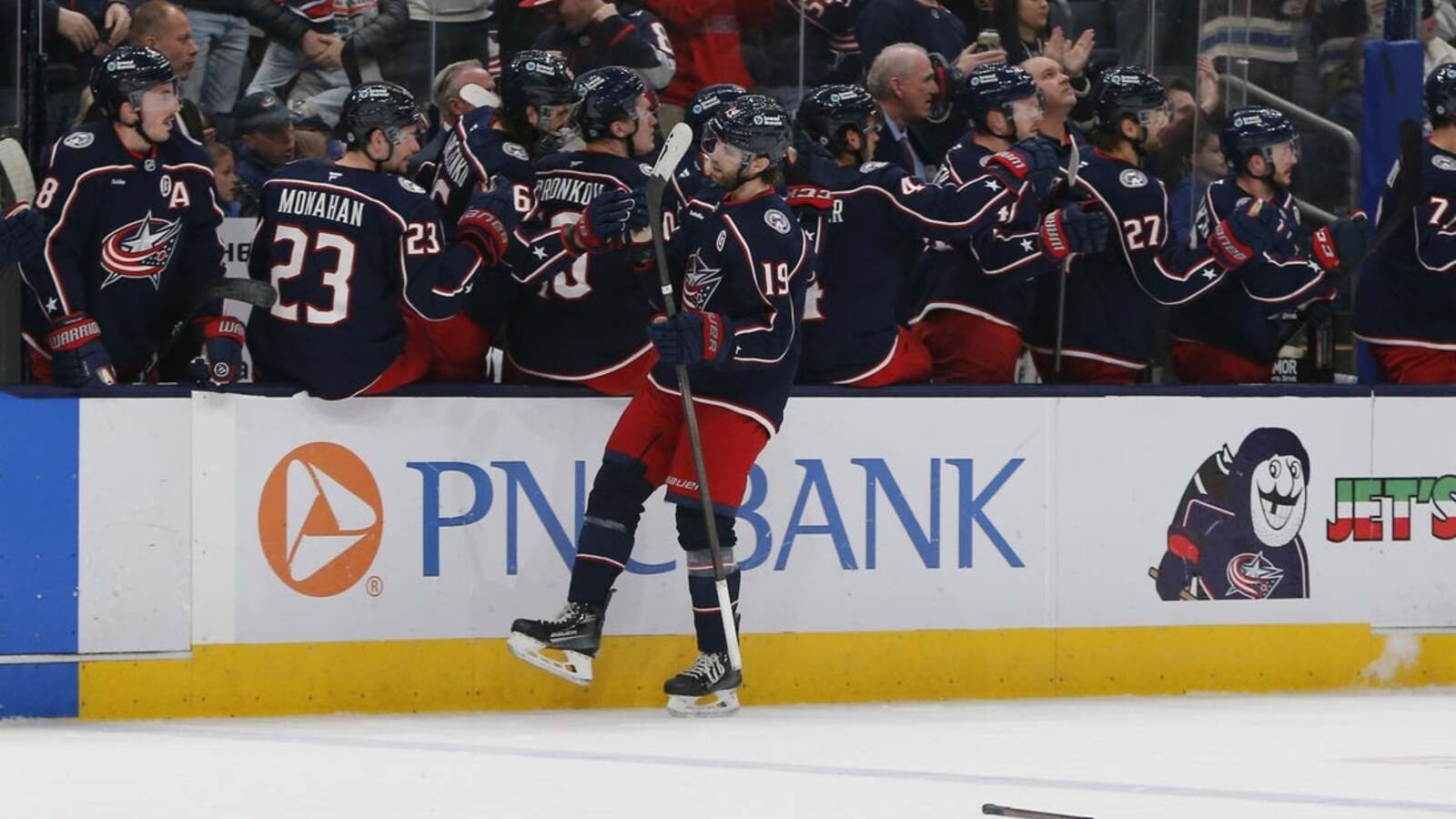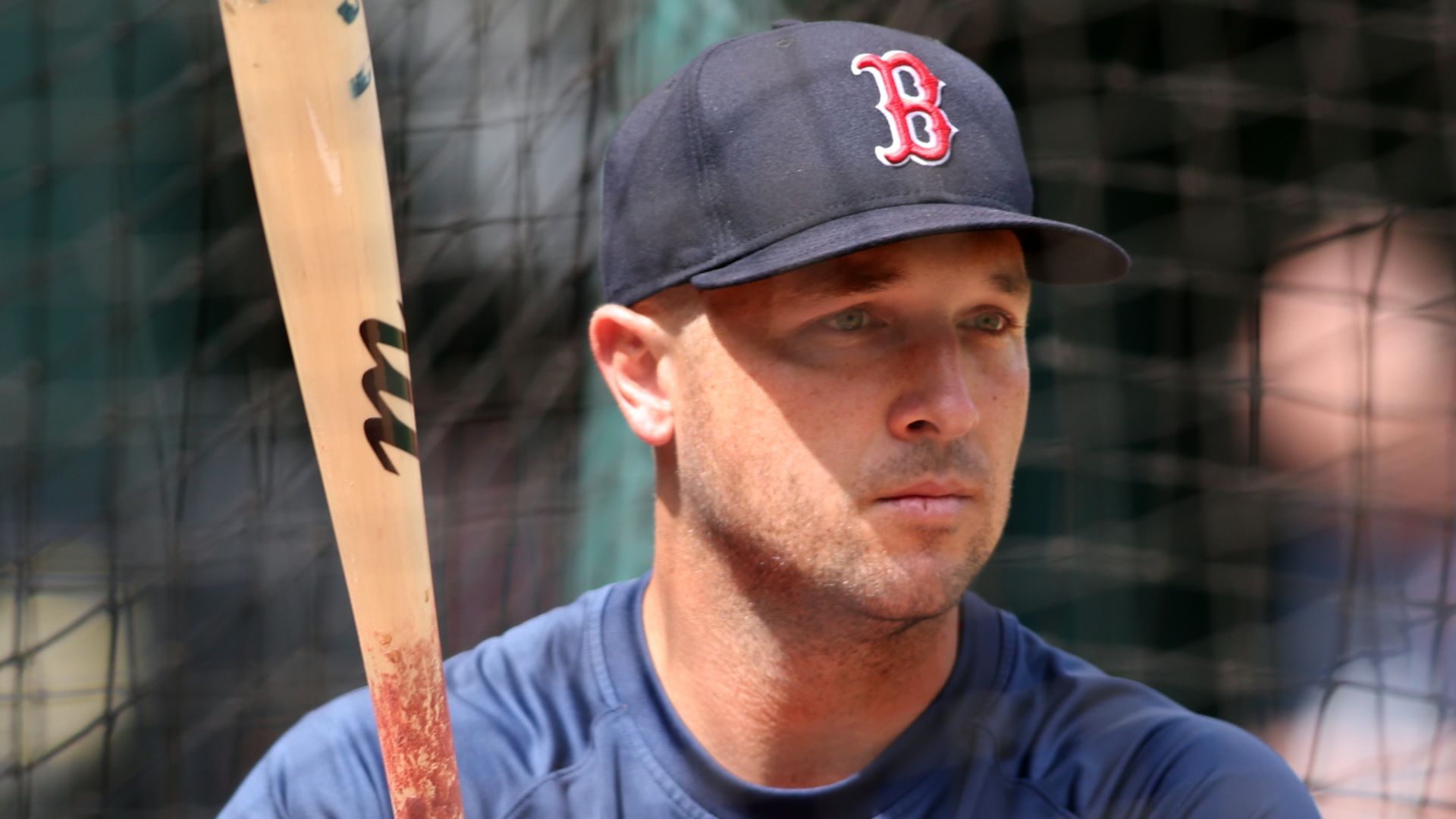A week is an impossibly short time in the context of a baseball season. For a sport obsessed with numbers, the stats are ridiculous this far into the season. More than 10 guys are hitting .400, which feels like one of the most unattainable records in athletic history over a full season. The sheer quantity of zero-ERA guys is bonkers. Analysis in the time of short samples seems futile.
Advertisement
But the machines have helped us drill further and further down into the processes baseball’s athletes undergo. And understanding their true talent based on these process metrics can happen in just one week because those numbers are directly observable in a way that ERA is not. How fast a guy is running, how hard he’s throwing a ball, how much he’s spinning it — these stats become meaningful in a handful of sprints, swings and throws.
Usually the purview of the scouting community, these numbers can tell us who’s feeling good, feeling healthy and moving closest to optimal. So, let’s see who’s feeling froggy in the first week of the season by focusing on five numbers that matter.
Fastball Velocity
Biggest fastball velocity surgers
| Name | 25 4-Seam MPH | 24 4-Seam MPH | Diff |
|---|---|---|---|
|
98.7 |
95.3 |
3.4 |
|
|
99.6 |
97.6 |
2.0 |
|
|
97.8 |
96.0 |
1.8 |
|
|
96.9 |
95.2 |
1.7 |
|
|
97.1 |
95.6 |
1.5 |
We saw this from Jordan Hicks last year, a big fastball early in the year that slowly dissipated throughout the season. This is exciting, but there’s always that question about his ability to keep his number that high. Hunter Greene went from disgusting to eye-popping when it comes to velocity, and he basically sat 100 mph for his start against Jack Leiter.
For the next three, though, their places on the above leaderboard are particularly meaningful. The last time Jesús Luzardo was throwing anywhere close to this hard he had the best season of his career, with a 3.58 ERA in nearly 180 innings with 208 strikeouts for the 2023 Marlins. This is the promise that had the Phillies starting him in the second game of the season, and — along with the fact that they helped him add a sweeper, increase the drop on his changeup and sinker by more than three inches each, and even out his pitch mix — means that he’s probably in line for another one of the best seasons of his short career.

GO DEEPER
For Jesús Luzardo, 11 strikeouts and a strong first impression with the Phillies
Hunter Brown has already been one of baseball’s best pitchers since he added his sinker midseason last year, and with an extra two ticks, he could stave off any regression that comes from the league seeing this version of his arsenal a second time through. He’s always had big velocity, so this is getting back some of what he’s lost. That’s a similar story for Shane Baz, who averaged 97 mph in his first tracked fastballs back in 2021 and then lost time due to injury and came with slightly muted stuff last season. Now he’s at 97 mph again and throwing a curveball that looks like his original yakker — this is the pitcher we thought he was as a prospect.
Advertisement
Down the list, there’s some good news for Kevin Gausman (+1.4 mph) getting his mojo back after some injury last year, Reese Olson (+1.1 mph) adding to an interesting debut and Gavin Williams building on an impressive spring.
Bat Speed
Bat speed surgers
| Player | Bat Speed ’25 | Bat Speed ’24 | Diff |
|---|---|---|---|
|
69.1 |
65.4 |
3.7 |
|
|
69.6 |
66.3 |
3.3 |
|
|
73.7 |
71.0 |
2.7 |
|
|
72.1 |
69.4 |
2.7 |
|
|
71.6 |
69.1 |
2.5 |
For the most part, these aren’t household names. But for Cody Bellinger, who’s trying to get back to some of his lost power, it’s a great sign. He went from well-below-average bat speed to just a nudge ahead of average. The slugging percentage on swings below 70 mph last season was .267, and above 71 mph, that number jumped to .541. Even just swings between 71 and 73 mph produced a .452 slugging. Bellinger is no Juan Soto, but if he can hit 25 homers again — and his new bat speed says he could — he’ll help make up for that loss.
For three of these top five bat speed gainers, they’re making up for what has been, so far, a sore spot in their abilities. Nolan Schanuel makes contact and gets on base, but he hasn’t hit for power in a way that first basemen need to be viable everyday players. This extra bat speed has already produced the best exit velocity of his young career (109.8 mph), one that pushes him from comps like Steven Kwan and Sal Frelick last year closer to the territory of Dansby Swanson and CJ Abrams. That works for Brice Turang and Ryan Kreidler, who also added some oomph, but is still, hopefully, just the beginning stages of growth that can push Schanuel up the first-base ranks.
Nolan Jones remains one of the most enticing buy-low acquisitions in the sport. The Guardians bought low on a familiar face because he hits the ball super hard, runs well and doesn’t chase outside the zone, and all those things are still happening even as the results aren’t there yet. Down the list, you see some interesting names like Jordan Beck, Junior Caminero, James Wood, Ben Rice and Logan O’Hoppe all adding more than two ticks of bat speed, which bodes well for their power potential this year.
Sprint Speed
Sprint speed surgers
| Player | Team | Age | Speed 25 | Speed 24 | Diff |
|---|---|---|---|---|---|
|
TB |
26.0 |
28.5 |
27.3 |
1.2 |
|
|
LAA |
32.0 |
28.2 |
27.1 |
1.1 |
|
|
LAA |
31.0 |
27.8 |
26.8 |
1.0 |
|
|
CHC |
31.0 |
28.6 |
27.8 |
0.8 |
|
|
ATH |
23.0 |
27.8 |
27.0 |
0.8 |
You can’t draw a straight line from sprint speed to stolen bases; there’s a lot more to it. But when you see that Swanson has his legs under him and the Cubs are third in the league in stolen bases, you can feel pretty good about the shortstop stealing 15 to 20 bases again despite recently turning 31. For the rest of this group, it might just be something to note. Other than Tyler Soderstrom, they’re veterans trying to stave off the decline that comes for every player, so it’s good to see them healthy.
Advertisement
Perhaps the most interesting sprint-speed surges are just a little down the list. Fernando Tatis Jr. (+0.8 ft/sec) and Xander Bogaerts (+0.7 ft/sec) are on a team that’s second in the big leagues in stolen bases and aggressive on the basepaths in all sorts of ways. Tatis, in particular, is 26 years old, making more contact in a small sample and showing that he’s headed into his peak in terms of learned skills and athletic performance. He’s in the National League, so that makes things tough, but he’s showing the beginning of the type of season that could end in individual hardware.
Exit Velocity
Maximum exit velocity surges
| Name | Team | maxEV 25 | maxEV 24 | diff |
|---|---|---|---|---|
|
ARI |
116 |
112 |
4 |
|
|
LAA |
110 |
106 |
4 |
|
|
WSN |
115 |
112 |
4 |
|
|
BAL |
117 |
114 |
3 |
|
|
LAD |
109 |
106 |
3 |
Hitting the ball super hard, even once, changes how a player is projected. Every player notices when they hit a ball harder than they ever have, too. But maximum exit velocity is a strange stat. Having a big number is good, and meaningful as soon as you get it, but not having that number is not necessarily bad. You might hit the ball hard tomorrow.
In any case, if Tatis is showing that he might compete for the NL MVP based on his sprint speed and contact rate, Corbin Carroll is swinging harder and has already hit a ball almost 2 mph harder than he’d ever hit one. He’s always able to hit for a good average with a strong on-base percentage. With his combination of eye and contact ability, if he adds 30 homers and steals 30 bases, he’ll be in the conversation. And that one single hard-hit ball makes 30 homers more attainable, even if that’s hard to believe.
We know Schanuel is swinging faster, so his inclusion here is no surprise. Wood just matched what he did in the minors, so this isn’t really a surprise — it just illustrates how his smaller sample last year masked that he has immense power potential behind what he showed. Ryan Mountcastle had over 2,000 plate appearances in the big leagues before this season and had never hit a ball even 115 mph, so that’s a notable thing; don’t count him out just because it’s been a powerless start so far.
Down list, take note of Abrams (+2.7 mph), Turang (+2.0 mph), Trey Sweeney (+1.8 mph), Dylan Crews (+1.5 mph) and Jordan Walker (+1) as young players who could be changing their trajectories in front of our eyes. The overlap with the bat-speed list makes a lot of sense because the stats are tightly correlated.
Stuff+
Stuff+ gainers
| Name | Team | Stuff+ 25 | Stuff+ 24 | Diff |
|---|---|---|---|---|
|
HOU |
122 |
104 |
18 |
|
|
SFG |
118 |
101 |
17 |
|
|
MIL |
115 |
98 |
17 |
|
|
CIN |
130 |
114 |
16 |
|
|
HOU |
121 |
107 |
14 |
|
|
PHI |
119 |
106 |
12 |
|
|
COL |
97 |
86 |
11 |
|
|
CIN |
98 |
89 |
9 |
|
|
TBR |
108 |
101 |
8 |
|
|
DET |
120 |
113 |
7 |
A player can change their mix or alter the shape of their pitch and affect as much change as adding velocity. And Stuff+ shines in the smallest of samples, becoming meaningful and predictive within 100 pitches. But of course, our fastball velocity gainers are all on here. So we extended the list to include a few more pitchers who might be interesting. After his last start, Framber Valdez may have people worried, but his stuff is all there — it’s just his command that’s been missing.
Cristopher Sánchez and Freddy Peralta are up in velocity, too, but that’s not really why Brady Singer is on this list. He’s on the list because he’s added nearly three inches of ride to his four-seam fastball and added a cutter that makes him harder for hitters to appraise. Tarik Skubal has also added ride to his four-seam, and his changeup has even more movement, too. Maybe he’s even nastier this year.
Advertisement
Down the list, there are some interesting young pitchers improving (MacKenzie Gore +6.5, Spencer Arrighetti +3.9) and veterans feeling good (Michael King +6.5 with more ride on his four-seamer, Pablo López +6.3). But these pitchers deserve more attention paid to them. Catch more daily analysis on Rates & Barrels, or wait for some pitching analysis next week.
(Photo of Hunter Greene: Jeff Dean / Getty Images)


